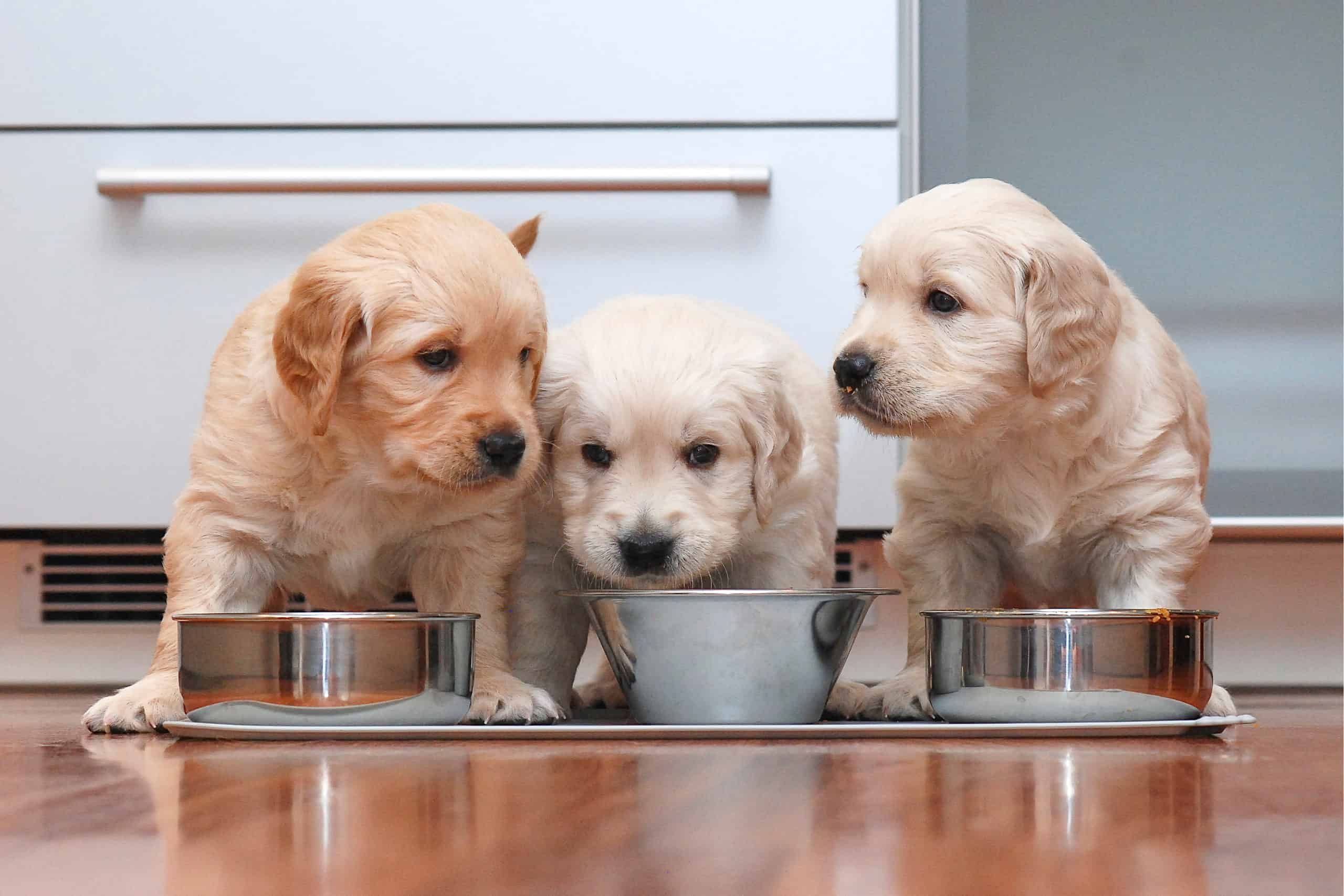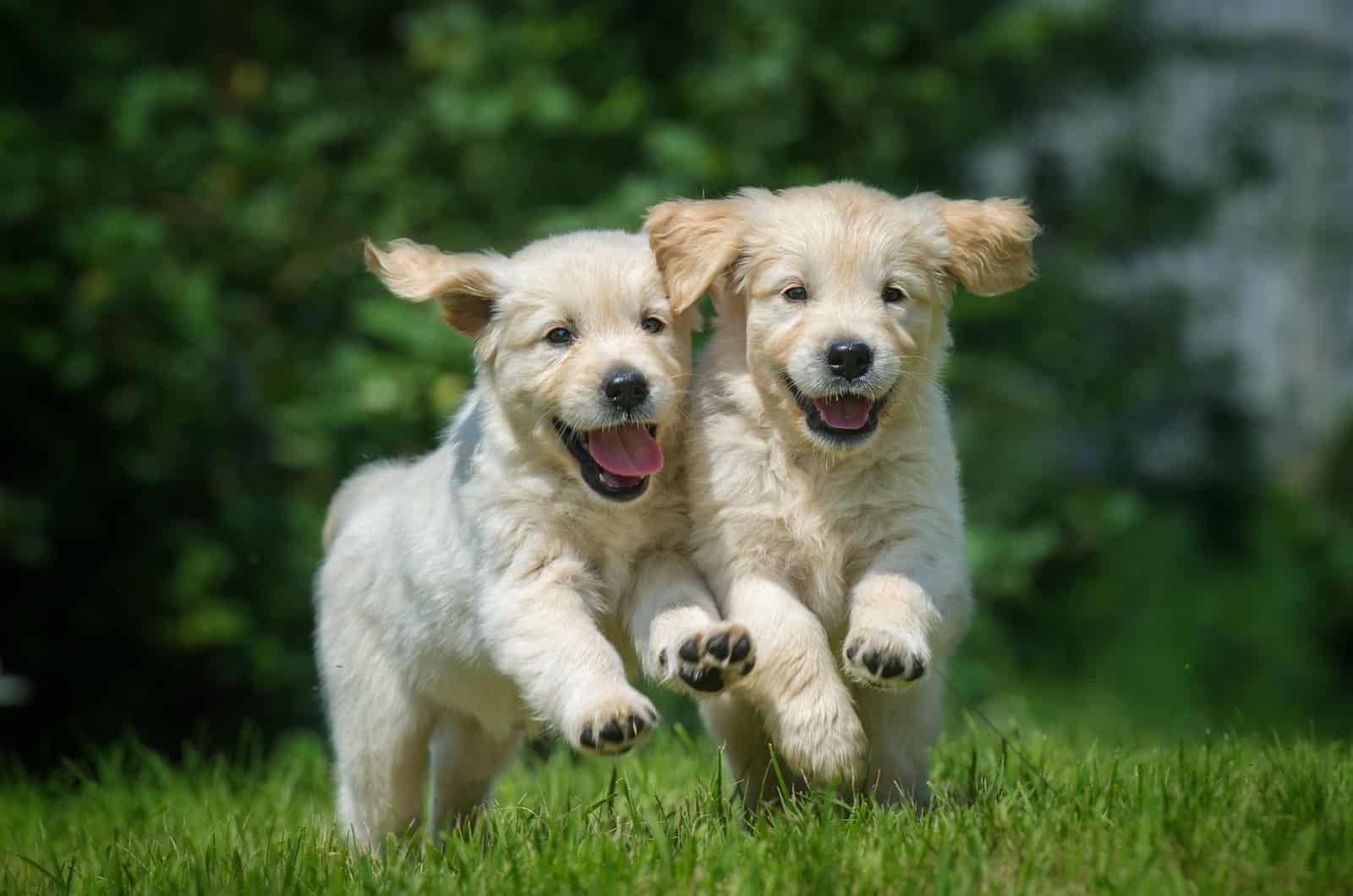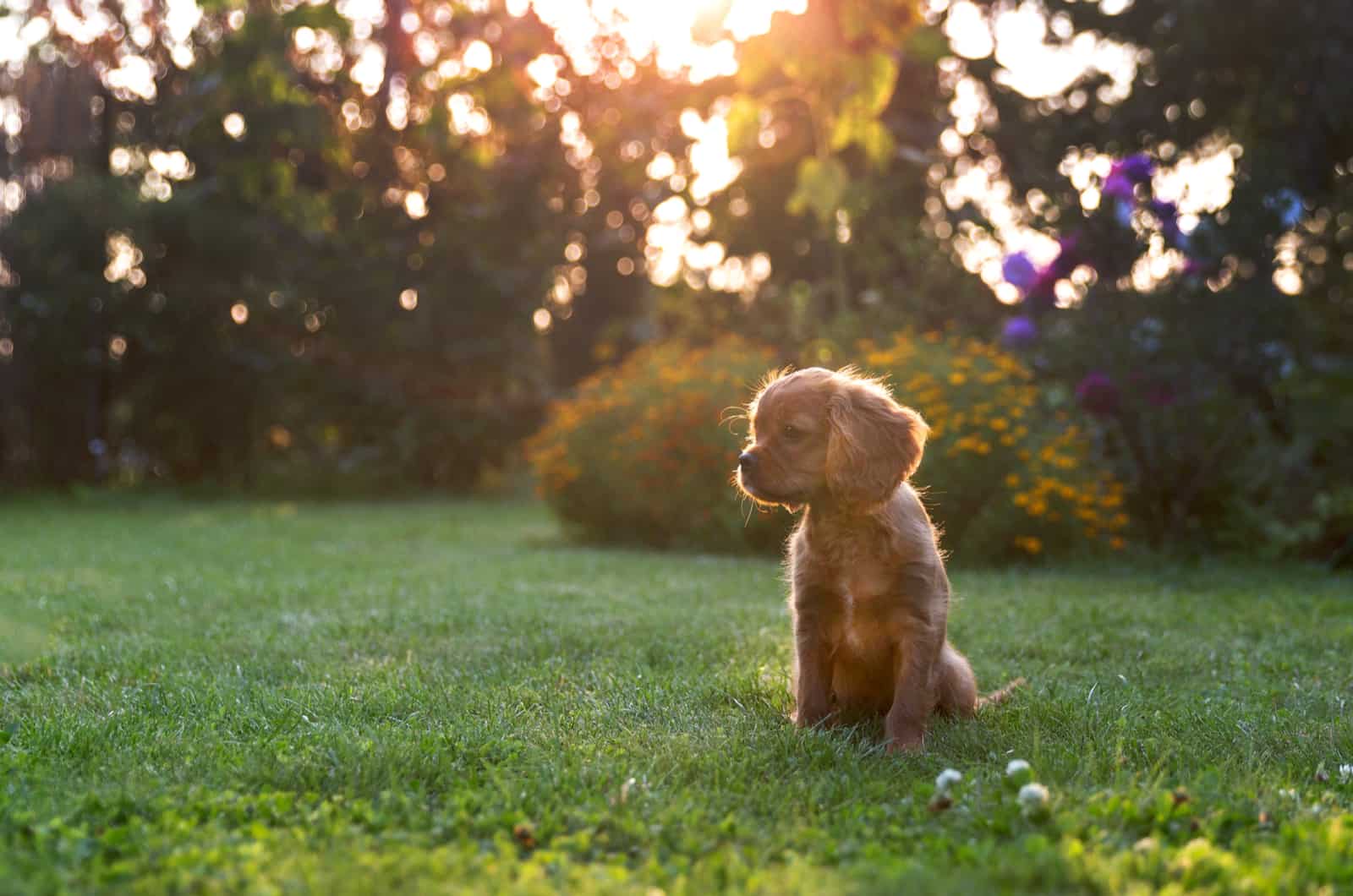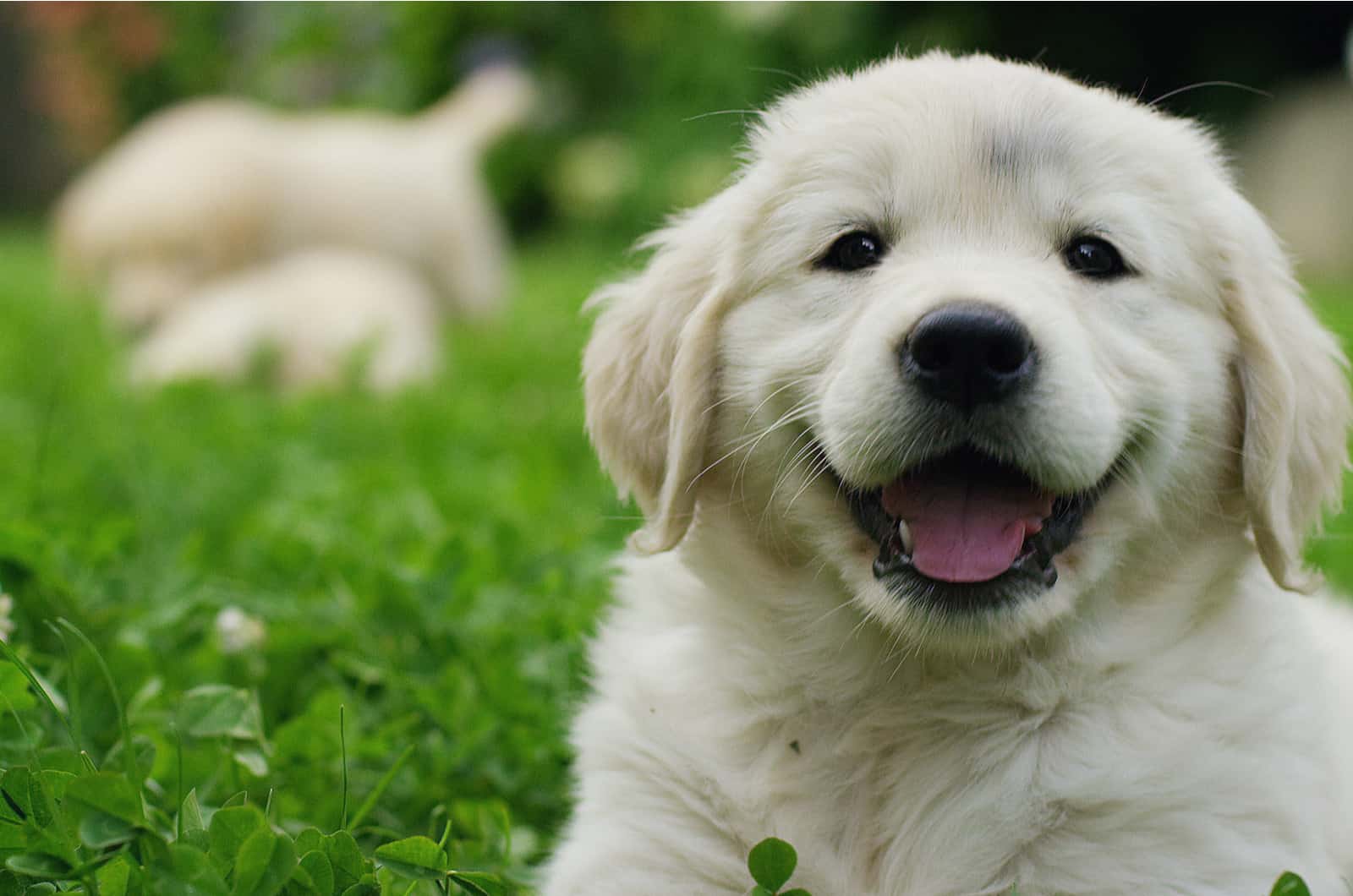We love them to pieces. With their cute, wet noses, tiny puppy kisses, and happy tails wagging all the time, puppies bring joy to all mankind. Getting one of these adorable babies and introducing it to your lifestyle isn’t as easy as it may seem.
If you’re blessed enough to get a puppy, you should be aware they come with great responsibilities. It’s not only about feeding the dog and taking it to the vet. Puppies need a firm hand that will guide them through the rocky road called puppyhood. If they establish bad habits and bad behavior in puppyhood, you will end up with lots of problems in adulthood.
First, you need to potty-train them, and you’re gonna need lots of patience and… even more patience! After your puppy has figured out where to go potty, it’s time to guide him through some basic obedience training. Walking on the leash, listening to your commands, coming when you call him, etc., are only the tip of the iceberg. Dog training is tough! Seriously, though, especially if you have a stubborn dog.
But let’s assume you’ve managed that too. We’re left with standard issues that occur with growing up, like teething, nipping, socialization issues, or going through spaying or neutering. Even then, the problems don’t stop there. As you can see, you will never be bored with your new puppy. In fact, you’ll never fully rest again.
Then, we come to an everlasting problem: your puppy’s energy level. So, when do puppies calm down? Don’t they ever get tired of all the zoomies around the house? When do they even gather new energy for the next day?
Yes, puppies are restless. You’ll even wonder if everything’s okay with your Fido since he has excess energy. The important thing to know is that you don’t have a hyper puppy. He’s normal, just like any other puppy. It’s just the way they roll.
To help you out through this restless phase, here’s a complete guide on your puppy’s energy and how to turn the zoomies into calm behavior!
Factors That Affect Your Puppy’s Energy

We have so many different dog breeds, recognized and unrecognized by the American Kennel Club (AKC). Meaning we’ve got as many different behavioral patterns. Not all dogs are the same, and if they were, that wouldn’t be normal or interesting at all. A dog’s energy depends on many factors. We can’t compare a Border Collie (a herding dog with lots of energy), a German Shepherd, and a Labrador Retriever. They’re all active dogs, but their activity levels are all different. Here’s which factors affect your puppy’s behavior.
Dog Breed
The most obvious factor that affects a dog’s activity and behavior is the dog’s breed. In fact, it’s the biggest factor that decides how much energy your pooch will have. Small and teacup-sized breeds, as well as Bulldogs, are considered low-energy breeds- They’re supposed to calm down when they’re somewhere around 6 to 12 months of age. Most pups calm around the 9-month milestone.
The vast majority of other dog breeds will go through their excessive energy phase at between 12 to 18 months old. Dog breeds like the Border Collie or the Australian Shepherd need more time to mature. It takes them up to two years to calm down. Even then, they will need lots of exercise and mental stimulation to waste their high-energy levels.
Some larger or giant dog breeds need even more time to grow up and become calm. Pups like the American Blue Bay Shepherd, the Great Dane, or the Neapolitan Mastiff take up to three years of age to reach maturity. If you’re a proud dog owner of any of these dog breeds, please stay patient for this “short” period of time.
Gender
The second biggest factor that affects the dog’s activity is gender.
Research has been conducted by animal behaviorists Scott and Fuller, who found differences in sizes between the genders. However, they didn’t manage to prove which gender matures faster than the other in terms of emotional reactivity. Even though some experts claim females calm down and mature faster than males, it’s still not completely proven. Females do reach reproductive maturity earlier. Some of them may calm after it, but it’s not a general rule.
Unfortunately, many dog owners think getting their puppy spayed or neutered will make them calmer. These operations will take care of bad behaviors like territory marking, but it will not cut out their excessive energy pattern and replace it with a calmer one. If your dog is energetic, there’s a high chance he or she will stay that way even after the surgery.
Dog’s Age
As an unwritten rule, older dogs are calmer and can help your puppy’s behavior. They can correct the puppy’s habits and create a healthy pack structure until your puppy grows up. Being a part of the pack will affect your puppy’s excessive energy positively and reduce it to a level where your puppy acts normally.
A dog’s age plays a significant part, and it would help every puppy owner to discuss it further. Let’s see at which age puppies calm down.
How Energetic Are Newborn Puppies?
As any newborn, baby puppies aren’t very mobile.
During their first couple of weeks, puppies will spend their time feeding, sleeping, and gathering strength to open their eyes and start moving around. Heads up: newborn puppies open their eyes between 10 and 13 days after being born.
This puppy stage is when we welcome the first signs of socialization. The puppies start interacting with other siblings. As weeks go by, their energy level will be on the rise, as well as their curiosity. This will make the puppies move around and explore.
After opening their eyes, puppies are still deaf, but they’re able to stand, walk, and sit. It’s time they begin to wander off exploring, so you might want to be around to get them back to their crate.
By the time they get their teeth, around four weeks old, puppies begin to play, run, see, smell, and hear. They’re ready to face the world and test your boundaries. Trust us – they will start testing you this early.
As soon as they switch to solids, puppies will have more energy. It’s natural that puppy kibble gives them more energy than their mom’s milk. This makes them ready to face the new changes each period of time brings them. This is when they start nipping, biting, and playing like any other puppy. These are normal signs of development, and if you have a newborn puppy, you’ll begin to wonder, “When do puppies calm down?”
It’s not advisable to have newborn puppies adopted before they reach 8 weeks of age. It’s the time when they become completely mobile and ready to explore everything around them. Sadly for you, this is the point at which they start becoming restless. Their energy levels grow higher, and you will need to find a way for them to expend it, e.g., light physical exercise or some puzzle toys.
Human socialization should be followed by basic commands and obedience training. Keep the first lessons short and concise. You should always use positive reinforcement and be aware that you might not have too much success in the first few weeks of training. Puppies have limited attention spans, so don’t overfeed them with information and commands.
The Ten-Week Milestone

The ten-week milestone is when puppies finally learn basic commands, i.e., sit and stay. It’s also the time when their energy levels increase, and puppies begin to need more stimulation to steer away from becoming bored.
It would be wise to establish a sort of a daily routine for your puppy to prevent bad behavior from happening. A puppy occupied with different activities won’t have the time to do something bad.
Around three months of age, your puppy will begin with teething. Teething is a difficult period for both of you. Your puppy may become nervous, and you will, too, thanks to all that chewed-up furniture around the house. Good chew toys should be a staple part of your household, so hop on Amazon quickly!
A puppy’s growth slows down as they turn 15 weeks old. This is also the time when they stop being puppies and become teens. Aside from this, 15 weeks is also when most dog breeds reach the peak of their energetic phase. Lucky for you, a decrease in high energy will follow.
What Happens Between 16 Weeks And 6 Months Of Age?
This is still the time at which your puppy grows. The growth is not only physical but mental too. You will need to show some understanding since your puppy will have a hard time figuring out its place in the world.
The only way your puppy will learn the boundaries you set is by pushing them. Truth be told, they’re exactly like babies. Your job is to help them lose excess energy and engage in some playtime. However, neither physical nor mental exercise should be overstimulating. If you overstimulate a puppy, it won’t be able to calm down and will become even more restless.
Keep the exercise process slow, and make yourself in charge of the games, so your Fido or Fiona will learn that calm behavior will always be rewarded. Instead of worrying, “when do puppies calm down?” try to guide your new puppy through puppyhood and implement good habits.
As we already mentioned, you should have an established routine with regular exercise. However, make sure you don’t push your dog to run on a leash. Instead, go for short walks in the dog park, around 20 minutes twice a day, and keep the pace slow.
Months Five To Twelve

At the age of five months, puppies are still learning a lot and trying to become socialized beings. If you fail at teaching them how to behave, you will have problematic adult dogs.
Make sure you’ve done the job correctly so far, and you have an outgoing puppy that shows signs of socialization. This way, you will be able to take your puppy to the park, help it work out to burn extra energy, and encourage further socialization.
If you don’t support exercise, all the energy will build up and result in negative behavior, such as biting, barking, howling, chewing, and eventually, becoming aggressive. The 5-month milestone is crucial for further development.
Around 6 months, the puppy will almost be a grown-up. In fact, depending on the breed, some dogs (small and teacups) will reach adulthood by the time they reach six months. Even females may reach reproductive maturity around this milestone.
The vast majority of dog breeds will still be in the prime of their energetic phase. Puppies will need playtime to burn energy. Add longer walks to your routine, at least twice a day, up to 30 minutes.
Excessive walks, especially walks on harsh grounds like concrete, may hurt your puppy’s growth plates, so don’t push it too far, okay? Stairs, jumping off high grounds, and slippery surfaces are also off-limits.
By the time your puppy becomes a one-year-old, he’s no longer a puppy. Even though many dogs remain puppies at heart, technically, after the 12-month milestone, they’re considered adults. Of course, giant breeds reach maturity later, both physically and mentally. Most other dog breeds are ready for a more strenuous workout.
You can slowly include longer walks for around 60 minutes a day. Depending on which dog breed you have, your pooch will still be quite energetic.
The dog breed affects the dog’s ability to reach maturity. Giant breeds and some high-energy breeds will need an additional year or so to start being adults. For example, giant breed dogs like the Great Dane calm down around 18 months.
Be that as it may, the key to a successfully calmed puppy is an established routine and a lot of exercises.
So, When Do Puppies Calm Down?
Yeah, when do puppies calm down? Is it time already?
Most puppies from different breeds will mature and thus calm down. However, it’s dog’s breed will determine when the puppy will grow up and how much energy it will have.
During puppyhood and adolescence, your puppy will go through growth spurts, many of them being rapid ones.
These growth spurts need to be watched carefully since they may cause pain in the pup’s legs called panosteitis. Besides achy bones and a change in the dog’s coat, other signs of your puppy going through a growth sprout with an increased energy level include:
•Increase or decrease in appetite
•Teething
•Body parts and limbs out of proportion
•Changes in their sleep cycle followed by voracious play
•Fear periods of time
•Clumsiness
How To Help My Puppy Calm Down

Every puppy owner must be aware of the breed’s general traits and how to deal with puppies, so they seem happy. If you make a concerted effort and do something your puppy loves, he’ll return the favor and shower you with love and obedience.
Different dog breeds have different preferences. For example, the active Border Collie loves herding and agility courses. He strives to become the star of every obedience training lesson. Other dog breeds like Pitbulls love chewing on stuff, so you better invest in good chew toys.
If you put in the time and effort to tire out your puppy, you will have a happy doggo! Once again, that daily routine is important. You need to find daily activities that will keep your puppy in control and help them settle down at the end of the day.
Here’s how to tire out a puppy:
•Go for a walk in the dog park.
•Engage in obedience training.
•Play games like fetch, frisbee, or tug-o-war.
•Take the puppy swimming.
Once your puppy is tired, you will need a place for him at the end of the day. Dogs need a bed or a crate in which they’ll feel secure and be able to gather more energy. Sending your dog to their bed should be a sort of training, so he learns his place. Still, it should never be a punishment.
Try not to lose your temper around a learning puppy. Sure, training them can be tiring. They will push your boundaries as much as they can. You will need to calm down, too, and stay positive. It’s the only way you can make an energetic puppy calm down.
Instead of busting your head thinking, “when do puppies calm down?” do something useful and help them calm down!
Can I Train a Hyper Puppy?
Our burning question: “When do puppies calm down?” just got an addition. Can you train a hyper puppy?
Of course, a hyper puppy can be trained! It’s not impossible, but it does require time and devotion.
Puppy training lessons should be as short as 10 minutes a day and broken up into shorter lessons during the day. Also, lessons should be simple and easy to learn. Start with teaching basic commands like “sit” or “fetch.” As you train your dog, try to ignore negative behavior and encourage only calm behaviors. You can even include a little treat if your pup does something good.
When training a hyper puppy, or any puppy in general, you need to know that positive reinforcement will bring you the best results. Punishment techniques can only cause more damage.
The mentioned rewards can be treats or pieces of yummy food off your table that are suitable for your puppy. If your dog is not motivated by food, you can also give him a little scratch behind the ears or rub his whole body. It’s up to you to figure out what your puppy loves.
FAQs

1. When should a puppy stop biting?
Puppies usually bite because they’re in the teething process. It’s a tough time for them, so show some understanding. You can expect your dog to stop biting as soon as he gets a full set of teeth, around 7 months of age. If your pup still bites, it’s a matter of behavioral issues, not teething.
2. When do Lab puppies calm down?
Lab puppies are one of those dogs that settle down later than usual. You can expect your Lab to calm down around 2 to 4 years of age.
3. Do puppies calm down after being spayed?
This is a common misconception. Dogs don’t seem to calm down after being spayed or neutered, as a matter of fact. Scientists haven’t found a link between these operations and your dog’s behavior.
4. When do Shih Tzu puppies calm down?
Shih Tzu dogs are small pups that tend to calm down around 6 to 9 months. Most of the pups reach maturity around their half-birthday.
5. At what age do Yorkies calm down?
Yorkies will calm down naturally by the time they turn two.
6. When do Pug puppies calm down?
Pug puppies will always have their zoomies, but they too are expected to calm before they turn two.
7. At what age do Shiba Inus calm down?
Shiba Inus reach adolescence around 5 to 6 months of age. It’s also a period at which they calm down naturally.
8. When do Beagle puppies calm down?
Beagle puppies should calm down somewhere between 6 to 12 months of age.
9. When do Dachshund puppies calm down?
Dachshunds are small breed dogs, and such dogs tend to calm down around their first birthday.
10. When do Golden Retriever puppies calm down?
Just like Lab puppies, Golden Retriever puppies will calm down later, around 2 to 3 years old.
11. When do Great Dane puppies calm down?
Great Danes are giant breeds, and as such, they will reach full maturity and calm down around the age of 2.
12. When do Maltese puppies calm down?
Even though they’re small pooches, Maltese puppies calm down later than usual. Around two to three years is the time period at which you may expect a calmer doggo.
13. When do Aussie puppies calm down?
Aussie or Australian Shepherd puppies will calm down around 2 years of age.
Finally…

So, when do puppies calm down?
As you can see, all puppies calm down at different ages. Most dogs tend to calm down as they turn 6 months. However, it doesn’t make other pups that become calmer later less worthy. Once you get to know your dog breed, you will understand all the processes, including calming down.















